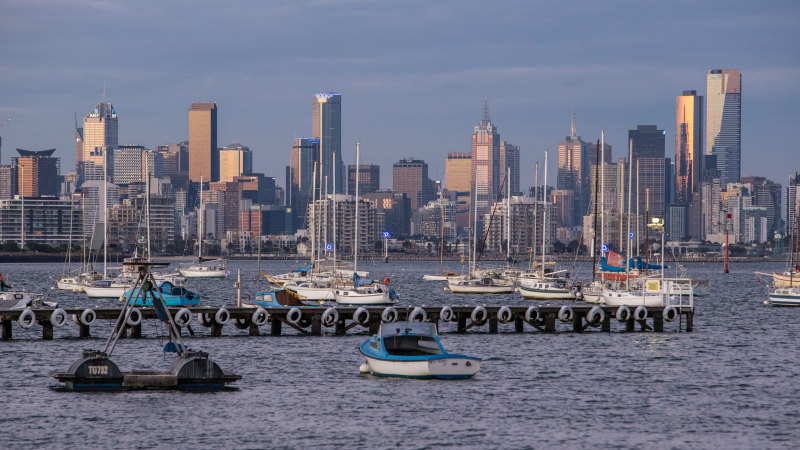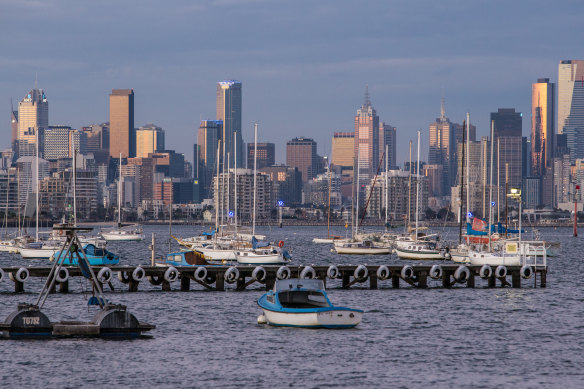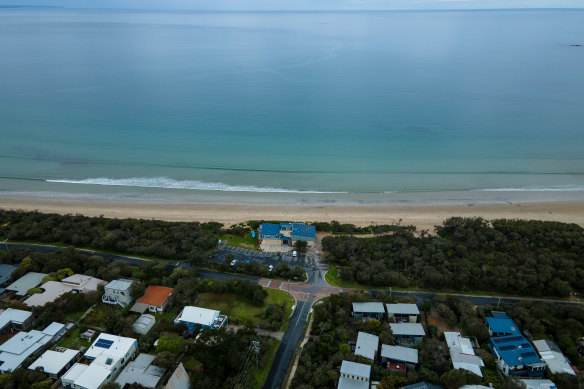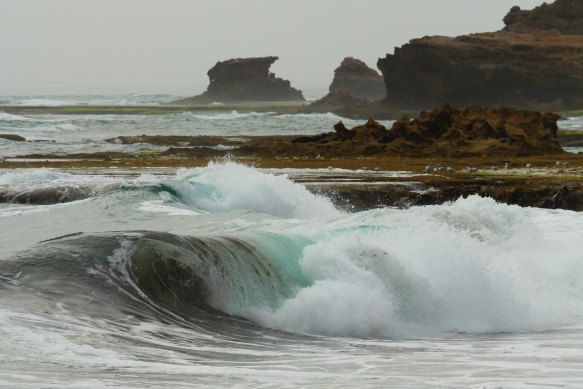‘Urgent call to action’: Research identifies Victorian areas most at risk from rising seas
Save articles for later
Add articles to your saved list and come back to them any time.
Key points
- More than 16,000 properties in Southbank are at high risk from sea-level rise.
- The state’s damage bill could reach $337 billion by 2100.
- Experts say retreat may be the only option for some communities.
More than 16,000 properties in Melbourne’s Southbank are at high risk of damage from sea-level rises and storm surges within 17 years as climate change exacts an alarming toll on Victoria, new research shows.
Melbourne’s west, Geelong and South Gippsland are also among the regions highly vulnerable to sea-level rises, according to the forecast, while Victoria faces damages reaching $337 billion in present value by 2100.
Sea level rise is set to take an alarming toll on Victoria, according to the new research.
The state government-commissioned report includes research from Melbourne University and consulting firm Climate Risk, which shows rising sea levels and more dramatic storm surges and flooding will batter bays and coastal areas, causing extensive damage to residential and commercial properties as well as roads and environmental and agricultural assets.
It says a host of adaptation measures will be necessary, ranging from natural and human-made barriers on coastlines to “basic retreat” of homes and buildings from near the coast.
Tom Kompas, University of Melbourne environmental economics professor and lead researcher, said both his team and Climate Risk reached similar conclusions, despite using different models.
“I was alarmed, especially in terms of the losses of environmental assets,” he said.
Inverloch is among the communities highly vulnerable to erosion and storm surges. Credit: Eddie Jim
Kompas said it may be impossible to protect some communities from rising seas.
“At some point for some communities, retreat is the only option,” he said. “It’s painful.”
Kompas confirmed the research was completed last year. However, the government had refused to release the report until now.
The state government has been contacted for comment.
New research indicates retreat may be the only option for some coastal communities as sea levels rise.
Life Saving Victoria chief executive Catherine Greaves said lifesavers had observed the influence of sea-level rises on many beaches.
“This evidence underscores an urgent call to action,” she said.
The report used two sea-level rise models.
The University of Melbourne modelled the impact of a sea-level rise of 20 centimetres, 47 centimetres and 82 centimetres for the years 2040, 2070 and 2100, respectively. Climate Risk used a sea-level rise of 1.5 metres by 2100.
Get to the heart of what’s happening with climate change and the environment. Our fortnightly Environment newsletter brings you the news, the issues and the solutions. Sign up here.
Most Viewed in National
From our partners
Source: Read Full Article




